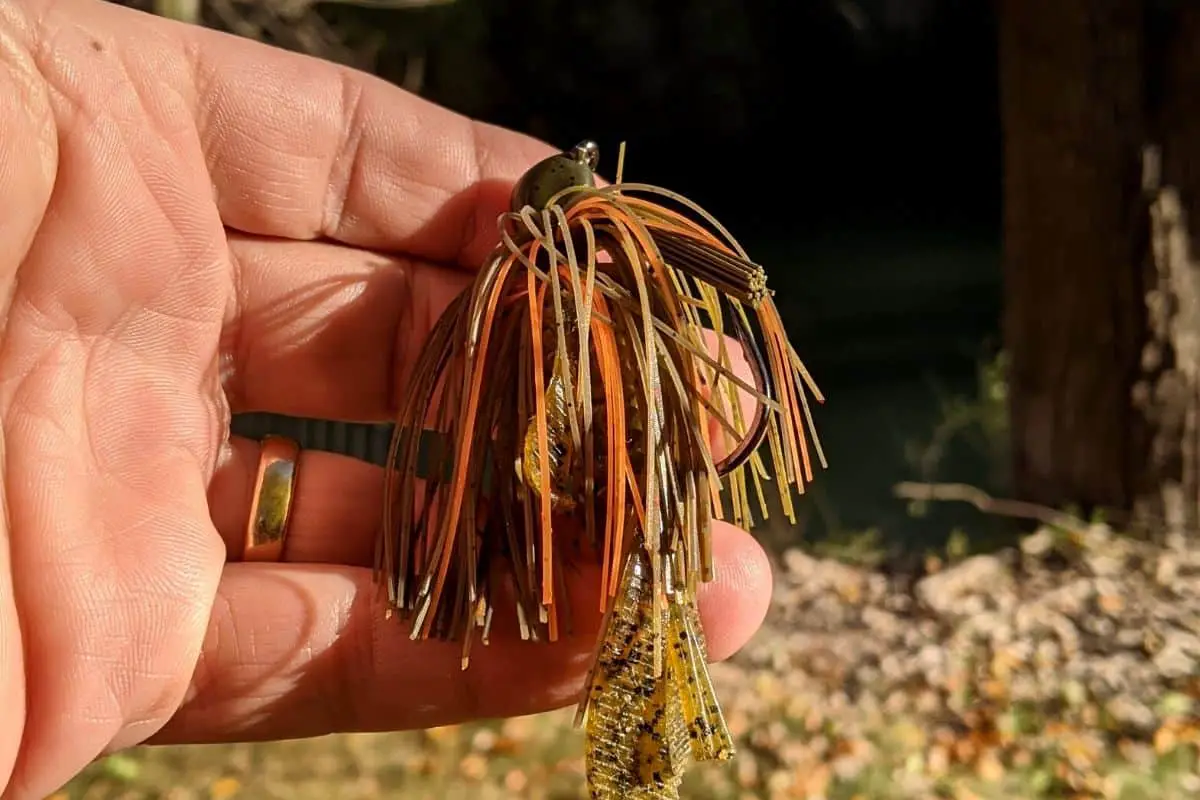The very best bass anglers are able to put their lures where others can’t or won’t. The skipping technique seems daunting, but if you start off with the right lures to learn this skill, it’s not as hard as first imagined.
The four easiest lures to skip include the hollow body frog, a soft plastic tube, a straight-tail soft jerkbait, and a skipping jig that is at least ½ oz in weight.
With a minimal amount of practice with these lures, you will soon be putting them in places many other anglers do not. The end result is more bass.
In this article, I am not going to go into great detail about the rod and reel setup. For specifics on setting up your equipment for skipping, check this article.
The Mental Game of Skipping Lures for Bass
This is the toughest part with learning to skip lures – by far.
No one likes to blow their spool into a massive backlash. When trying to skip lures, the size and depth of overruns on the spool can be daunting.
Backlashes are going to happen. Period. And it’s OK.
The 8lb monster bass you pull out from under that dock will make up for the occasional frustration. Just make sure that if you do get a backlash, don’t start to pick it out right away. You may get a huge bite. If so, reel that bass in and deal with the backlash later.
On a positive note, you will soon be making more good casts and presentations than bad ones when you start off by learning with these four lures.
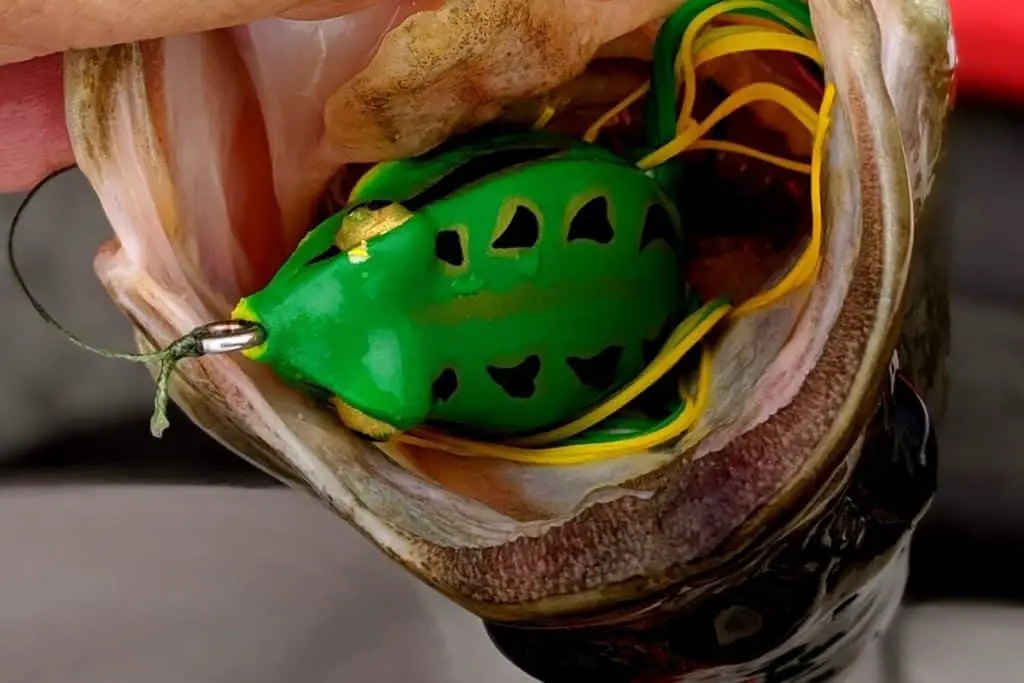
#1) The Best Lure for Learning How to Skip – Hollow Body Frog
For bass anglers that are taking that first step to becoming a skipping master, the hollow body frog is the lure to start with.
Most models on the market are at least ½ oz, which is ideal. The shape of the lure lends itself to skipping with the flat surfaces.
The hooks on hollow body frogs often nest right up against the body of the lure, minimizing unwanted snags and hangups when targeting low hanging branches and docks.
The soft, collapsible body also is forgiving when the lure accidentally pounds into the target. If you are new to skipping lures, hitting the metal side of a dock with a hollow body frog is less likely to make a loud noise than a ½ oz jig.
Be sure to slightly trim the legs of the frog right out of the package to make it more compact.
#2) Soft Plastic Tubes are Excellent Skipping Lures
My second choice for easiest skipping lures is a soft plastic tube.
The overall body design glides across the surface of the water with ease. Its compact size and lack of appendages mean there are fewer opportunities for it to grab a small limb, dock post, or other objects that may redirect it and cause a backlash.
When paired with an insert tube head, this is a combination built for skipping success.
As far as the size of the tube head, I would use at least ¼ oz. If that weight is not skimming the water’s surface easily, then step up to a ⅜ oz.
Insert tube heads have an exposed hook which can result in some hang-ups if used around a lot of wood.
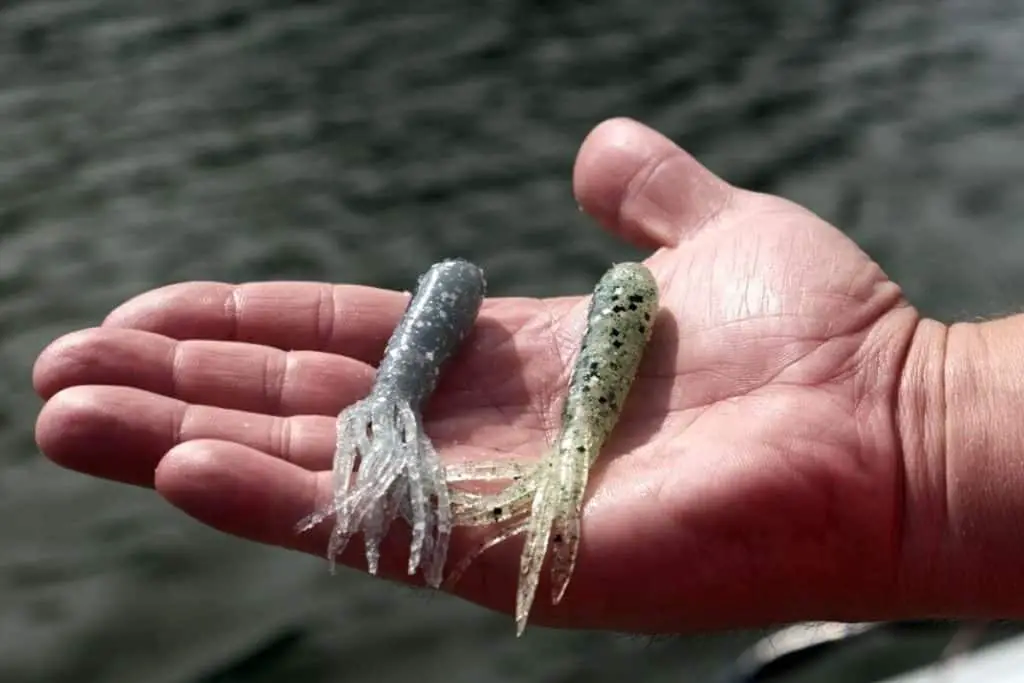
I prefer to use a soft plastic tube for skipping when my targets are mainly docks or some overhanging tree limbs that do not dip beneath the surface of the water.
The 3.5” models are my favorite for ease of skipping.
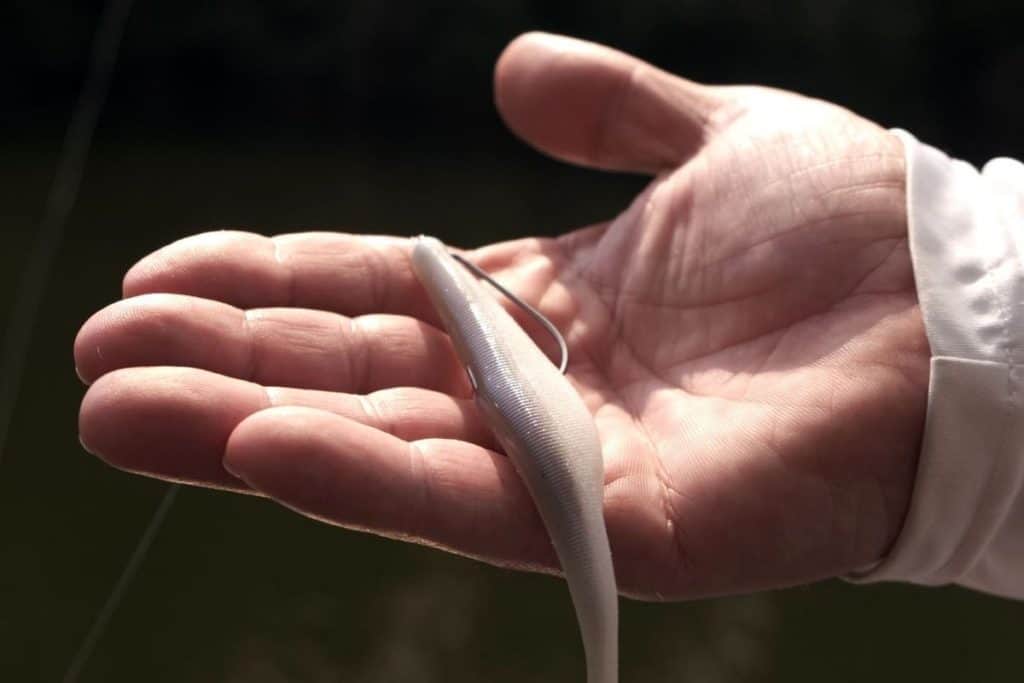
#3) Straight-tailed Soft Jerkbaits
It is important to keep in mind that the straight-tail version is easier to skip than the very popular paddle tail. The added resistance of the paddle hanging off the back of the lure can cause the bait to stop abruptly and increase the potential for a backlash.
Using a 5” version that is salt-impregnated, not salt added, will make this lure a dream to cast and skip.
Salt added means that the granules are sprinkled over the lure after the injection molding process is complete. This salt will wash off quickly and not add weight and density to the lure like a model that is salt-impregnated.
Rigging the lure weightless and skin hooking the point on the back of the lure is a very high-percentage setup for hooksets.
Giving a soft jerkbait a nice skip under overhanging cover and then letting it sink, weightless, is a tremendous presentation all year, but especially in the back half of the year when bass key in on baitfish.
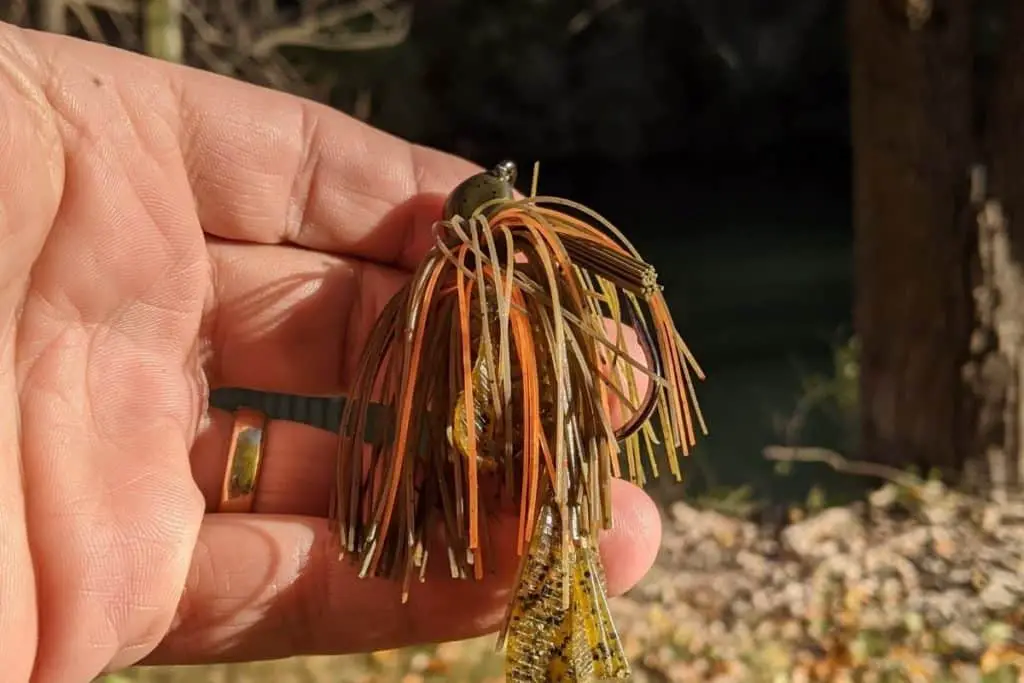
#4) A Skipping Jig is an Excellent Lure for Probing Deep Into Cover
While a skipping jig, in my opinion, is a little trickier to use than the above-mentioned lures, it is still a tremendous bait. If you can skip hollow body frogs and soft plastic tubes consistently, you will have no problems with the jig.
I prefer to keep the weight at ½ oz and will also cut down the size of the soft plastic trailer. Keeping a compact profile with the plastic appendages close to the lure will minimize potential hang-ups.
While most any bass jig will work, skipping jigs are designed with a flat side opposite of the line tie. This gives the bait a nice surface to begin its sliding approach to the target area.
The density of the jighead itself makes this skipping lure ideal for rocketing into the deepest and densest portions of brush or docks. Most jigs designed for skipping also come with a denser weed guard which helps to eliminate unwanted snags.
Final Thoughts
When anglers take the next step in their bass fishing adventures and include skipping lures into their repertoire, a whole new level of fishing opens up to them.
On lakes where fish are pressured, they often push away from the edges of cover and bury themselves in the most difficult to reach places.
Skipping a lure right on top of them can elicit vicious reaction strikes and get your adrenaline rushing.
Don’t forget to check the article on setting up your equipment for skipping and check out the video for more detail regarding what we just talked about.
Be safe out there and make sure to encourage someone today. You never know how you may change their life forever.
Isaiah 6:8

